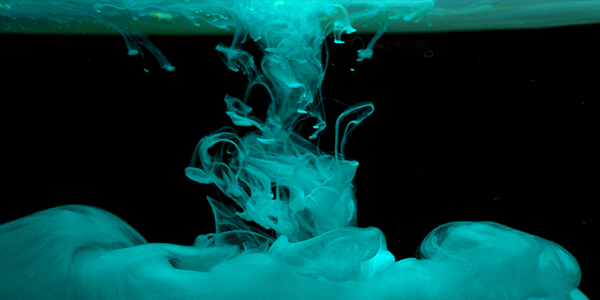
12 Apr Bioremediation: a Natural Solution to an Unnatural Problem
Reading Time: 3 minutesHold on tight, because ESA’s David Fullmer is about to throw down some super serious (and super interesting) science in this next article on natural solutions to unnatural environmental problems. Specifically, we’re talking about how to get rid of nasty chlorinated solvents using an unlikely natural solution… bacteria.
In last month’s article, we discussed the benefits of using bacteria to remediate non-chlorinated organic spills — those caused most frequently by leaking fuel oil or gasoline, among others. Chlorinated solvent releases can create a more serious environmental concern; they are often more expensive to investigate and remediate because of their composition. Chlorinated solvents (ethenes, ethanes, and methanes) are denser than water and largely insoluble. Thus, when chlorinated solvents encounter groundwater, they tend to sink. This contrasts with non-chlorinated organic chemicals, which are less dense and typically float on top of groundwater, making them easier to remediate.
Chlorinated solvents are collectively known as degreasers. While there are many different chlorinated solvents, perchloroethylene (commonly used by drycleaners) is encountered more frequently than any other. Other common degreasers are 1-1-1-trichloroethane, trichloroethylene, carbon tetrachloride, and methylene chloride,. All are denser than water and, due to their chlorinated nature, are difficult to remediate. Bioremediation in the presence of oxygen (the preferred way to bioremediate non-chlorinated compounds), is detrimental when applied to chlorinated solvents because several harmful breakdown products, including vinyl chlorides, are created.
Certain bacteria, however, will effectively bioremediate chlorinated solvents in an oxygen-deficient (anoxic) environment. This process is called Enhanced Reductive Dechlorination (ERD). ERD is a complex process where microorganisms (naturally occurring or engineered) are added to an anoxic environment along with biostimulants to biodegrade chlorinated solvents in saturated soils and groundwater.
ERD is a complex process that depends on numerous factors. First, an accurate conceptual site model is needed during the design phase. After the conceptual site model has been completed, ESA can determine if subsurface conditions are favorable for ERD. If not, the subsurface environment must be altered to promote favorable conditions.
Chlorinated solvents are then degraded through a reductive dechlorination process where chlorine atoms on the molecule are replaced by hydrogen atoms. A variety of substrates can be utilized as biostimulants and include, but are not limited to, sodium lactate, emulsified vegetable oil (EVO), and diluted molasses. However, the selected substrate often needs to be dense to mimic the density of the chlorinated contaminant being targeted. Then nutrients (fertilizer) need to be added. The selection of nutrient(s) depends on the site-specific conditions and requires intimate knowledge of the groundwater biogeochemical parameters and subsurface environment.
Below is a summary of the four major components of a successful ERD program:
Biostimulation (Substrate injection)
Biostimulation is the delivery of nutrients to subsurface environments via injection wells to enhance the anaerobic degradation of contaminants. ERD accelerates naturally occurring biodegradation of contaminants by creating favorable conditions in the soil and groundwater through nutrient addition. It is imperative that the biostimulation plan target high-mass source areas and that the substrate makes full contact with the solvent.
Bioaugmentation (Bacteria Injection)
Following biostimulation, the subsurface environment is bioaugmented using naturally occurring or laboratory-engineered microorganisms to optimize substrate fermentation to drive ERD. Bioaugmentation bolsters the native bacterial population responsible for degrading the contaminants and shortens the remediation time.
Multi-Parameter Monitoring
Monitoring wells should be located to evaluate remedial performance and to document protection of potential receptors. Groundwater samples for field and laboratory analysis should be collected both during and following treatment and compared to baseline conditions to determine effectiveness. The data should be directly related to the remediation performance goals and objectives to strategically transition to monitored natural attenuation (MNA).
Strategic Focus on Transition to Monitored Natural Attenuation (MNA)
Overall costs for the Client are reduced by transitioning from active remediation to MNA. MNA describes a naturally occurring process whereby contaminant concentrations continue to decrease over time. Obtaining a Remedial Action Permit is often the key milestone to determine the endpoint of these remediation projects.
ESA is here to help our clients determine if ERD is an appropriate remedial method for their chlorinated solvent-impacted site. In our experience, sustainable, longer-term bioremediation often outperforms shorter-term, faster-reacting in-situ chemical oxidation (ISCO) reagents. Along with the numerous health and safety benefits, ERD can be a cost-effective method to bring a site with chlorinated solvent impacts into regulatory compliance.



